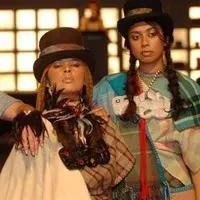Buyers spend up large at inaugural MAORI MARKet
Written by

A million dollars worth of contemporary Maori artwork sold at the first MAORI MARKet - the largest ever exhibition and sale of contemporary Maori art from throughout New Zealand. More than 100 leading and emerging artists had work on display, filling the TSB Bank Arena on Wellington's Queens Wharf.
Around 7,000 people, including international collectors, turned up for the event.Guest Native American artists Lillian Pitt, Denise Wallace featured alongside the Maori artists. MAORI MARKet was modelled on the enormously successful Indian Market in North America. It was organised and promoted by Toi Maori - a charitable trust set up by leading Maori artists to foster and promote contemporary Maori arts.
Toi Maori General Manager Garry Nicholas said the success of MAORI MARKet guaranteed it would be staged again in two years, with plans already underway to make it bigger and even more interactive. "It is part of a 10 year plan and our first MAORI MARKet has exceeded all of our expectations," Mr Nicholas said. "Already the artists are planning for the next event and thinking about artwork they will create." Mr Nicholas said several major exhibitions had toured North America, and the success at home was a platform to launch more exhibitions internationally where the work is a 'hot' collectable commodity. "This is a springboard for a range of other Maori activities, like tourism. International buyers become curious and want to come to New Zealand and meet the artists and see the country that has inspired the work," Mr Nicholas said. The inaugural MAORI MARKet was held during 27-29 April 2007 in Wellington.
Image: Bi-cultural rap models Nirvana Phillips-Wineera, Kiri-Jean Green and Challise Walford-Munro from Whitireia Performing Arts School on the red carpet at the MAORI MARKet fashion show in Wellington. Created by Suzanne Tamaki, the wearable art was made from op-shop blankets, beads, kitsch tikis and feathers to symbolise colonisation. It was daringly offered for sale for land, beads or guns.